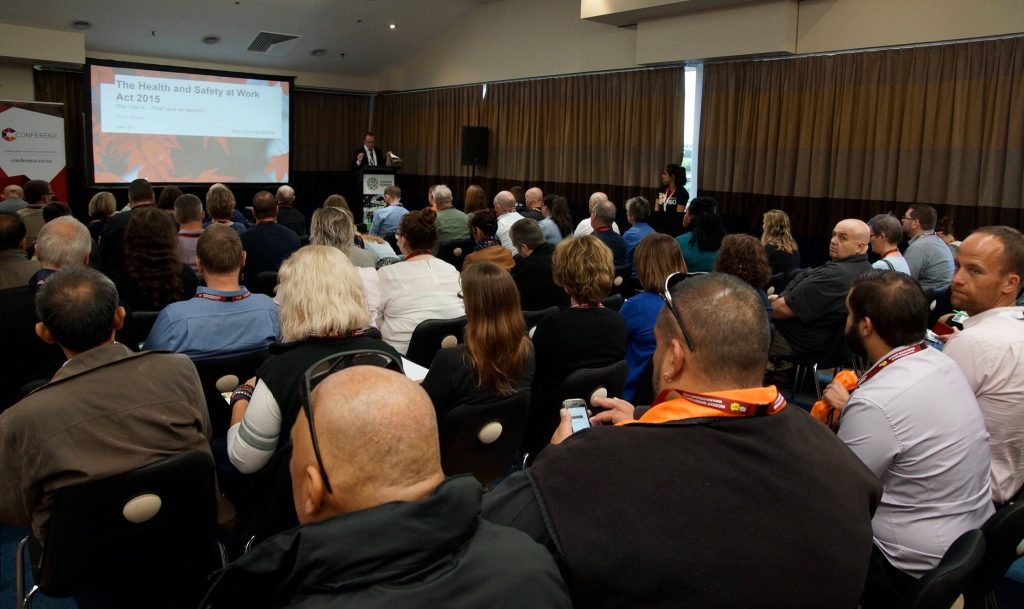The past three years have seen a massive shakeup in health and safety with changes to the regulations, attitudes and protocols needed to handle workplace incidents

The National Health and Safety Leaders’ Summit at the Safety 360 event this March brings Safety II and other key topics to the forefront of discussion.
The 2018 Hazardous Substances Management Summit at the same event seeks to acquaint participants with practical solutions to workplace chemical dilemmas.
There are two other summits Health and Wellbeing and Occupational Health.
Many believe it is time for a change in our approach to workplace safety.
Businesses have adopted an approach to health and safety which leaves workers inundated in paperwork and protocols warning them of the risks in their job and mandating how to deal with breaches in health and safety codes.
The goal of this approach is to work towards a society of Zero Harm – which focuses on having no incidents
Unfortunately, this approach has had the unintended effect of stifling proactive thought about health and safety risk and disengages the workforce.
This attitude toward health and safety is referred to as Safety I and tries to deliver on the unrealistic goal of no accidents – avoiding the fact that things go wrong.
There’s nothing fundamentally bad about this approach, but in reality it leads to a focus on stopping small events from happening, diverting attention from critical risk events.
Increasingly, organisations are adopting a Safety II approach to their health and safety practice. Health and safety managers realise that the best people to mitigate risk are those who are at the coalface.
“Organisations have traditionally desired as much central control over their people and activities as possible. But this compliance-based approach may not be the best way to manage work and safety in modern, complex and dynamic environments,” says Dave Provan, PhD candidate in Griffiths’ Safety Science Innovation Lab.
“Safety I isn’t applied well to modern environments where safety incidents fall outside the prescribed manual. Safety II applies a mindset of ‘what could go right?’, rather than detailed scenarios of wrongdoing.
“Safety II describes a different approach, one that is centred around openness, collaboration and flexibility, such that the people performing the work are enabled and supported to adapt their work as needed to overcome the gaps, challenges, surprises, multiple conflicting goals, limited resources, and pressures to always achieve more.”
Jono Brent, Chief Executive of Connetics is a pioneer of the Safety II paradigm in his business – a high risk contracting, engineering and logistics company.
Brent stresses the importance of being a visible leader, driving proactive health and safety through communication.
A key factor of applying Safety II is supporting health and safety with two-way communication that allows for health and safety protocols to be continually improved, revised and supported by both management and workers.
“While we have achieved great things under the Safety I paradigm, unfortunately the top down, hierarchal approach to safety has left our staff, who are at the heart of our efforts to keep safe, disengaged with current safety practices.
“At Connetics, we have been using the philosophies of Safety II to put our staff at the centre of the solution and giving them the chance to design their own solutions that drive improved culture and safety performance.
“The implementation of Safety II can be hard – managing the culture shift to develop proactive health and safety means changing the way workers, management and boards view and talk about health and safety,” says Brent.
The chemical industry association Responsible Care NZ has helped provide presentations which will help clarify complex and often confusing compliance requirements
“The key to keeping people safe around workplace chemicals”, says Responsible Care CNZ chief executive Barry Dyer “is to provide answers to the all-too-familiar ‘just tell me what I have to do and how to do it’.”
Dyer chairs the hazardous substances summit and Francois Barton of the Business Leaders’ Health and Safety Forum and Chris Jones at the Department of Corrections will chair the Safety ll discussion.
Join the discussion with those leading the shift at Safety 360 27 & 28 March in Auckland.
For more info see www.conferenz.co.nz/Safety360



